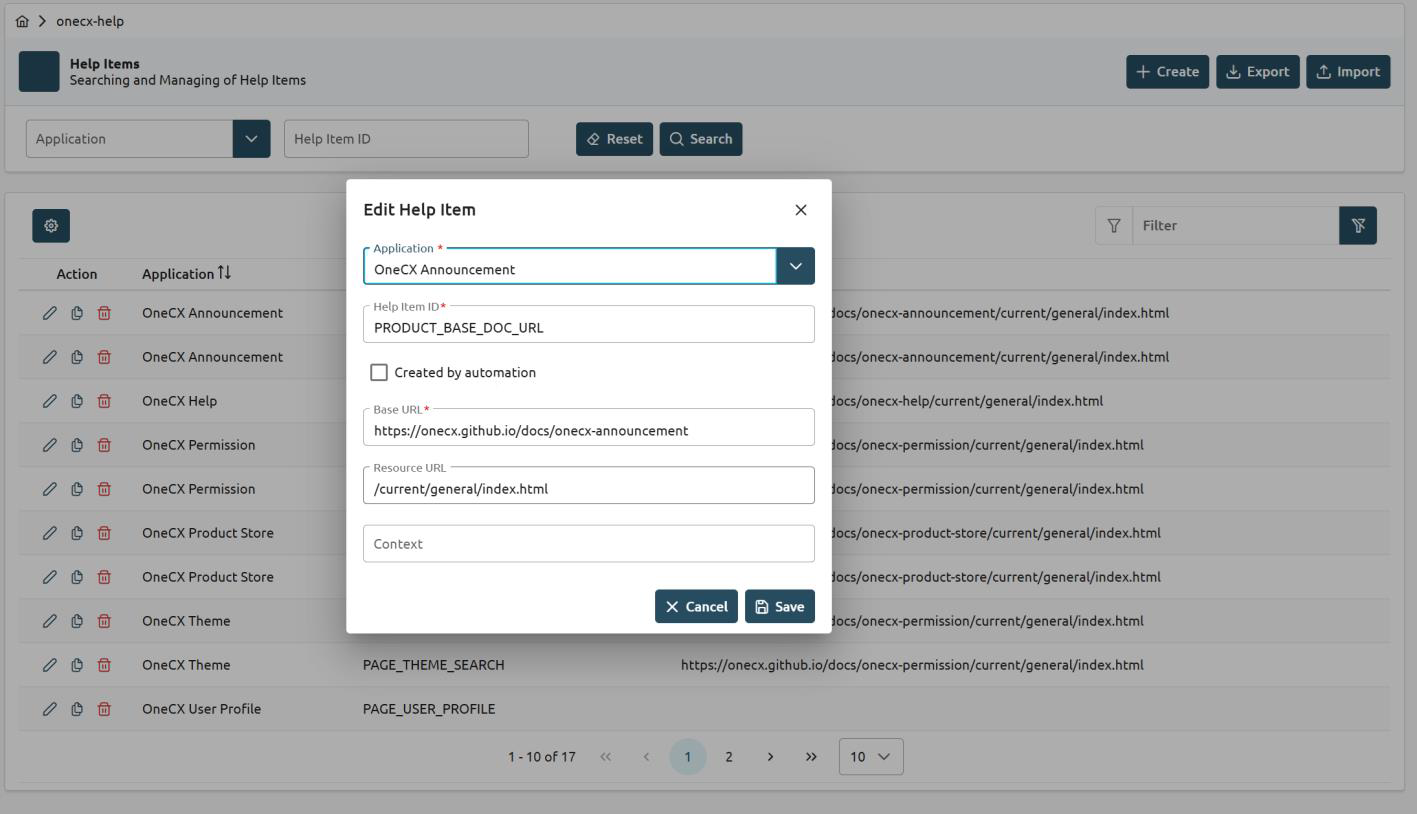OneCX Help Management

Overview
The Portal Help Management feature is designed to provide users with easy access to help resources and support within the portal. It ensures that users can quickly find the information they need to resolve issues, understand features, and maximize their use of the portal.
Contextual Help:
-
In-Page Assistance: Offers contextual help directly within the portal pages, providing users with relevant information and guidance based on their current activity.
Administrative Controls:
-
Help Content Management: Provides administrators with tools to create, edit, and manage help content, ensuring that information is accurate and up-to-date.
-
Instant Updates: Allows administrators to instantly update help content, ensuring users always have access to the latest information.
Benefits
-
Improved User Experience: Ensures that users can easily find the help they need, reducing frustration and enhancing their overall experience with the portal.
-
Increased Efficiency: Provides quick and effective support, helping users resolve issues faster and get back to their tasks.
-
Enhanced Support Quality: Allows administrators to maintain high-quality help resources, ensuring that users receive accurate and helpful information
Licence
This software is licensed under the Apache License, Version 2.0. You may obtain a copy of the license in the corresponding LICENSE file or visit the Apache website for more information.
Contributing
We welcome contributions from the community. If you would like to contribute to the development of OneCX Help Management Software, please follow our contribution guidelines (tbd).
Issue Tracking
All OneCX Help issues are tracked and maintained at the issue tracking tool.
Structure Overview
OneCX Help Software is a comprehensive solution for managing Help items in a user-friendly and efficient manner. It is a solution that consists of three main components: a backend service, a user interface and a backend-for-frontend (BFF) layer.
The three components of the OneCX Help Software are as follows:
-
Help User Interface (UI) The user interface component is based on Angular, a popular JavaScript framework for building dynamic web applications. It offers a user-friendly and intuitive interface for interacting with the Help system. Users can perform actions such as searching and editing of Help items.
-
Help Backend for Frontend (BFF) The BFF layer acts as an intermediary between the frontend user interface and the backend service. It handles tasks such as data aggregation, transformation, and composition to provide an optimized API for the UI. The BFF layer is designed to enhance performance and simplify the integration of the frontend with the backend service.
-
Help Backend Service (SVC) This component provides the core functionality. It handles tasks such as storage, retrieval and editing of Help items. The backend is built cloud native using Quarkus.
Interfaces are based on the TM-Forum standard TMF 667.
